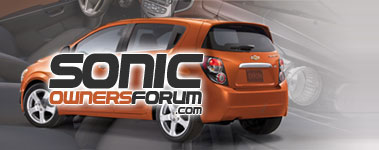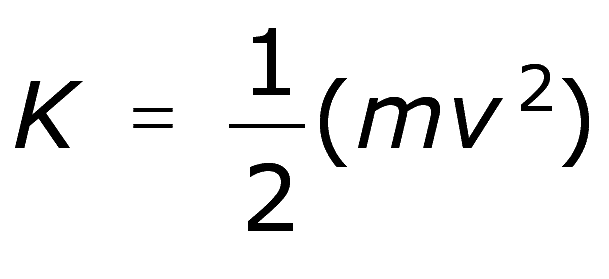One thing some people forget, or just haven't had the chance to learn: as aero, powertrains, and rolling resistance approach optimum levels of efficiency - there is still one overriding rule to consider.
Kinetic energy.
Simply put, (if we negate friction and resistance of air) it is the energy needed to move a mass (m) at a velocity (v).
Look at the relationship between mass and velocity. There's a square on the velocity - and it's that square that ultimately limits our top speed, kills moviestars in their Ferraris and makes the prospect of a meteor hitting the Earth a devastating idea.
Consider an example:
Let's say our Sonic weighs 1250 kg, and we're driving 30 km/h.
(0.5)(1250)(8.3^2) = 43.4 KJ
Now, double the mass (perhaps close to a Silverado?).
(0.5)(2500)(8.3^2) = 86.8 KJ
You can see how the mass doubles the energy.
Double the speed!
(0.5)(1250)(16.6^2) = 172.2 KJ
:sadbanana: Just by going twice the speed (60 km/h), a Sonic-sized vehicle takes as much energy to propel as a SIlverado-sized vehicle at 30 km/h.
But what you should really be interested in is that just by doubling the speed, it now takes FOUR TIMES as much energy to push the car down the road.
This is why brakes fade and need to be designed bigger on vehicles intended for racing - when you slow from high speeds, you're dissipating a lot of energy, which turns into heat that needs to be dissipated.
Also, this is why I would much rather hit a wall at 20 mph instead of 40 mph!

[Taking a deep breath]
One reason some manufacturers like to "lug" the engine at highway speeds is fairly straightforward:
1. Less RPM means less fuel injected on a per revolution basis, i.e. if an engine is spinning 50% faster, there are 50% more injections.
2. By running an engine below its most efficient area / below peak torque you can increase fuel economy by reducing pumping losses. Less RPM means less exhaust mass flow which gives your lower backpressure AND you have to open the throttle farther to make the same power (that you would running closer to peak torque). Since F.I. engines run closed loop fuelling, this doesn't use any more fuel: It lowers the restriction on the air coming into the engine.
Look at "displacement on demand": that's how it delivers fuel gains - running very close to WOT really lowers pumping losses and increases fuel economy.
One last disclaimer*
I've been doing this kind of work for about 20 years now with the last eight specializing in new methods for optimizing fuel economy.


